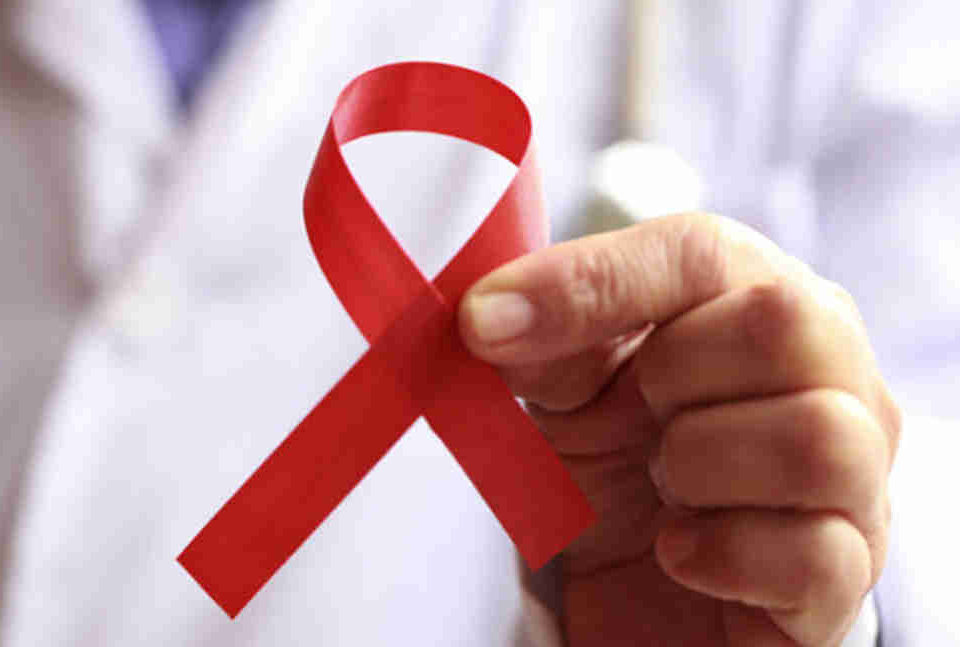- 如有疑问,请联系电邮
- customer@ihealth66.com
USNEWS:什么是多发性骨髓瘤?

中国原发性肺癌诊疗规范(2018年版)(2)
2019年1月8日
中国原发性肺癌诊疗规范(2018年版)(3)
2019年1月10日By Lisa Esposito
今天,USNEWS健康专栏作家发表了一篇重要的健康文章,是关于“多发性骨髓瘤”的介绍!为什么要发表这篇文章?美国没有雾霾,而且在烟草危害性也一直做着大力的宣传,所以肺癌的发病率比较稳定。而随着人的年龄增大,受外界危害的负荷累积逐渐增加,有时会发现,在做简单的家务时竟然折断肋骨,同样不会认为日益恶化的背痛可能是由一种血癌引起的。洛杉矶骨髓瘤和骨癌研究所的创始人、总裁兼首席执行官詹姆斯·贝伦森博士说,这些都是多发性骨髓瘤患者的典型情况。多发性骨髓瘤是一种相对罕见的癌症。根据美国疾病控制和预防中心CDC的数据,老年人的风险最大,45岁以下的人很少发生病例。男性比女性更容易患上骨髓瘤,而非洲裔美国人中的发病率是白人的两倍多。
据美国癌症协会(American Cancer Society)称,预计2018年将有近30800例新发多发性骨髓瘤病例,预计将有近12800人死亡。随着美国人口的老龄化,多发性骨髓瘤预计会增加。多发性骨髓瘤尚无治愈方法。然而,通过适当的治疗和持续的护理,患者可以获得更长时间的缓解。最近在治疗和研究方面取得的进展提供了鼓励的理由。随着中国老龄化的到来,该疾病也将逐步降临,下面就来读一下原文,及时发现,及时诊断,及时治疗,是当前最好的办法。
YOU DON’T EXPECT TO break a rib while doing light housekeeping. Similarly, you wouldn’t think your worsening back pain might be caused by a type of blood cancer. However, these are among classic scenarios for patients who develop multiple myeloma, says Dr. James Berenson, the founder, president and CEO of the Institute for Myeloma and Bone Cancer Research in Los Angeles.
Multiple myeloma is a relatively uncommon cancer. Older adults are most at risk, with cases rarely occurring in people under 45 years old, according to the Centers for Disease Control and Prevention. Men are somewhat more likely than women to be affected by myeloma, which is more than twice as common among African-Americans than whites.
Nearly 30,800 new cases of multiple myeloma were expected in 2018, according to the American Cancer Society, with nearly 12,800 deaths expected. Multiple myeloma is expected to increase as the U.S. population ages.
There is no cure for multiple myeloma. However, with proper treatment and ongoing care, patients can go into remission for longer periods. Recent strides in treatment and research offer reason for encouragement.
Multiple Myeloma Cancer
Multiple myeloma is the most common form of myeloma. Myeloma involves the white blood cells in the bone marrow, called plasma cells, part of the body’s immune system. Plasma cells respond to infections by creating antibodies.
In myeloma, plasma cells become malignant. These cancerous cells, called myeloma cells, grow out of control, forming masses or tumors within the bone marrow.
Myeloma cells can crowd out normal, red-blood producing cells, causing people to become anemic. Myeloma tumors may interfere with normal bone regrowth, weakening bones and putting people at risk for fractures, even with minimal trauma.
Bones of the spine, skull, pelvis, ribs, hips and shoulders – where bone marrow is active – are most affected. Back pain can be a symptom. Spinal cord compression may result. In addition, with fewer normal plasma cells, the body loses its ability to fight infections.
Kidney failure is another complication as abnormal, myeloma-related proteins clog the kidneys. Unexplained kidney problems in patients who don’t have diabetes or other likely causes may be signs of myeloma.
Multiple Myeloma Symptoms
Because symptoms of multiple myeloma are nonspecific – they could be caused by any number of conditions – it’s not an obvious diagnosis.
“Sometimes patients just present with fatigue and tiredness because blood counts are low,” says Dr. Adriana Rossi, associate director of the Myeloma Center at New York Presbyterian – Weill Cornell Medical Center. “Other times, it can be bone pain. Sometimes it can be foam in the urine.”
Primary care providers may see patients for vague symptoms, order standard blood tests and realize they need more information. “The doctor will hopefully order the next level of tests specifically looking for myeloma,” Rossi says. “Because it’s something that you wouldn’t find unless you’re looking for it.”
Routine testing for blood counts, for instance before a patient has surgery, may pick up unexpectedly low blood counts. That would then spur further testing that could pick up an abnormal antibody that’s a marker for multiple myeloma.
In other cases, unsuspected multiple myeloma can become advanced and do a lot of damage to the body. “Patients who end up in the emergency room with kidney failure are emergent,” Rossi says. “Or someone who presents because they’ve broken a bone in their spine.”
Treatment Considerations
A three-drug combination is typically used to treat patients with newly diagnosed multiple myeloma. Different drug classes work together against the disease.
Berenson notes that today’s “plethora” of drug treatments for myeloma are much more effective than in the past. With better targeting to cancer cells, he says, drugs now available cause far less collateral damage to the body and fewer side effects than just a dozen years ago. Multiple myeloma drugs from each class include the following:
- Drugs that destroy cancer cells: Proteasome inhibitors such as Velcade, Kyprolis and Ninlaro.
- Drugs that modify the immune system’s response: Immunomodulatory agents such as Revlimid and Pomalyst.
- Steroids such as Decadron and Medrol.
In his clinic, Berenson says, patients may also receive low-dose chemotherapy such as Doxil, Cytoxan or Bendamustine.
Patients undergoing multiple myeloma treatment face a variety of side effects. Loss of appetite and mouth sores, hair loss, nausea and vomiting, anemia and sleep problems are among treatment side effects that patients may need help to cope with.
Stem Cell Transplant Option
In some cases, patients undergo stem cell transplants using their own blood-forming stem cells, known as autologous transplants. Transplant complications can include infections, bleeding and anemia.
Berenson says his group no longer recommends stem cell transplants, although others may recommend it highly.
“The transplant (clinical) trials are not really showing any benefit in terms of overall survival,” Berenson says. “They are showing a benefit in terms of delayed progression of the disease, but that may be a function of your inability to measure the tumor marker more than the ability to really delay the progression of the myeloma.”
However, Rossi says that improved testing means doctors are now better able to detect how well patients are responding to drug treatment.
“We test for what we call ‘minimal residual disease’ and if you can’t find it, that correlates with the best outcome,” Rossi says. “My practice is to start a patient on a three-drug combination and see how deep of a response I can get. If I can get them all the way until I can’t find any myeloma, I may not use a transplant,” she says. “I’ll save it for when they relapse. If I cannot – if the disease is resistant – the transplant is a very good tool to get them to that very low remission.”
What to Ask Your Doctor
When patients are newly diagnosed with multiple myeloma, they should ask doctors the following key questions:
- What kind of myeloma is it? “Some are high risk and some are standard risk,” Rossi says. “That helps us predict how quickly it’s going to come back.”
- Why are you recommending this specific line of therapy? “Understand that while it’s still considered an incurable disease, it’s a very highly treatable disease,” Rossi says. “We have a number of options.”
- Am I candidate for a stem cell transplant? Should I expect to have one? Why or why not?
- What can I do to stay as healthy as possible?
Patients looking for accurate, current information on multiple myeloma – including treatment outcomes and survival data – should resist the urge to use Google, Rossi advises. “People put out (information) online but don’t go back to edit it,” she says. “So there are many things that are very out of date and no longer relevant. Seek information from a physician, not the internet.”
See a Specialist
For patients with suspected multiple myeloma, it makes sense to see a specialist who is familiar with the condition to confirm the diagnosis and develop a treatment plan.
“The important thing is to get an accurate diagnosis,” Rossi says. “And it’s always helpful to get an opinion from a specialized center, because general oncologists in the community may not see a lot of myeloma.”
With rapid advances in research, emerging therapies and continually evolving approaches to treating multiple myeloma, getting a second opinionat a specialized center is worthwhile.
“It is a very good time for the field,” Rossi says. “We’ve had a number of drug approvals with more emerging in the next year or two. Survival has quadrupled since 2005, which is just wonderful and hopeful. But every year we change the guidelines and the rules, and we have different ways of approaching things.”
Multiple myeloma specialists work in conjunction with local physicians, Rossi emphasizes, so patients can receive most of their care near home.
One thing patients can do at home is make sure they’re drinking enough water to protect their kidneys. Dehydration is a concern with multiple myeloma, Rossi says, as patients’ kidneys are more vulnerable.
Multiple Myeloma Prevention?
It’s unclear what people can do to prevent multiple myeloma beyond being aware of risk factors for cancer in general. Avoiding tobacco, reducing alcohol, following a healthy diet, being careful about chemical exposures and staying physically active are all tied to cancer prevention.
Environmental toxins play a role in cancer risk. World Trade Center first responders during the 9/11 attacks have been shown to have a higher risk for multiple myeloma. For New York City firefighters exposed to Ground Zero toxins who are diagnosed with multiple myeloma, it tends to occur at a younger age and with more aggressive cancer than otherwise expected.
Multiple Myeloma Prognosis
Advances in myeloma care are expected to continue with therapies early in the research pipeline and in clinical trials. For example, CAR-T cell therapy involves taking a patient’s T cells – a type of cell in the immune system – from the blood and altering them in the laboratory so they attack cancer cells. Quantities of these modified cells are grown in the lab and given to patients intravenously.
However, therapies like these are “still works in progress,” Berenson says. CAR-T therapy is costly, he notes, and it remains to be seen whether it’s an improvement over conventional treatments for multiple myeloma.
Antibody approaches that attack more specific myeloma markers have shown high effectiveness against myeloma, Berenson says. His group is also working on genetic approaches to targeting myeloma tumors.
Patients are now living longer with multiple myeloma, with average survival rates on the rise. “In our clinic, it’s approaching – thankfully – a decade,” Berenson says. It was much different 30 years ago, he adds, when median survival after diagnosis was about two to two-and-a-half years.
“With all the new treatments, we have a dramatic improvement in overall survival of these patients,” Berenson says. “Fortunately, their quality of life is dramatically improved as well.”





